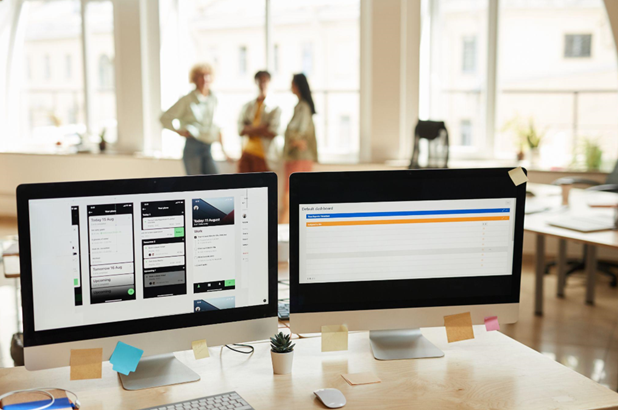Lowest cost doesn’t always equal long-term value
Match screen features to your specific use
Comfort and setup are key to satisfaction
Warranty and support protect your investment
Upgrading your screen can feel like stepping into a maze of specifications, models, and price tags. One moment you’re comparing refresh rates, the next you’re debating whether a bigger size means better value. The process can be confusing, but approaching it with a clear plan helps cut through the noise. The goal isn’t just finding a screen that works today, but one that fits your needs for years ahead.
Look Beyond the First Discount
It’s tempting to be drawn to the lowest price you see, especially during sales events. Yet a monitor is one of those purchases where the cheapest option isn’t always the smartest. Plenty of people look for cheap monitors when upgrading, but the real win comes from balancing affordability with lasting value. A model with better build quality, efficient power use, and reliable performance will often save you money over time. When you consider how many hours a day you’ll spend looking at the screen, that extra investment makes a difference in both comfort and lifespan.
Match the Screen to Your Everyday Use
Not every screen suits every purpose, which is why it pays to think about how you’ll use yours most often. If you’re working from home, crisp text and accurate colours may matter more than high refresh rates. Gamers, on the other hand, usually look for smooth motion and low response times to avoid lag. Someone streaming movies might prioritise wide viewing angles and vibrant contrast. By aligning features with your habits, you’ll prevent overspending on specifications you rarely use while still enjoying the benefits that actually improve your experience.
Don’t Overlook Ergonomics and Setup
It’s easy to focus on the screen itself and forget how it will fit into your workspace. A monitor that only tilts a little or sits too low can cause strain if you spend hours at your desk. Adjustable height, swivel, and tilt settings allow you to position the screen exactly where it feels comfortable, which can make a huge difference to your posture over time. Even the placement of connection ports matters. Having HDMI or USB inputs in easy reach can save you the hassle of constantly moving the monitor around when switching devices. Comfort and convenience are often overlooked, but they play a key role in your overall satisfaction with the upgrade.
Balance Resolution and Size for Clarity
Big screens can look impressive, but size without clarity quickly becomes frustrating. A large monitor with low resolution will make text appear fuzzy and images less sharp, leaving you squinting rather than enjoying the extra space. On the other hand, a smaller monitor with high resolution can deliver crisp detail that’s ideal for both work documents and entertainment. The sweet spot often depends on how close you sit to the screen and what tasks you prioritise. Matching the right resolution to the right size ensures your new setup feels clear, comfortable, and genuinely useful rather than overwhelming or underwhelming.
Check for Warranty and Support
When choosing a new monitor, the fine print is just as important as the display itself. A strong warranty signals confidence from the manufacturer and provides security if a problem develops. Some brands include multi-year coverage and easy replacement options, while others leave you navigating a complex returns process. After-sales support also matters, especially if you run into setup issues or need replacement parts later. Taking a moment to review warranty length and customer service options may not be as exciting as comparing refresh rates, but it often saves stress and extra costs down the line.
Conclusion
Upgrading your screen is more than just chasing the latest trend. A thoughtful approach that weighs comfort, clarity, and reliability ensures your choice continues to serve you well beyond the first unboxing. By considering how the monitor fits into your daily life and checking the support behind it, you give yourself the best chance of enjoying a screen that feels right every time you switch it on.










Recent Comments